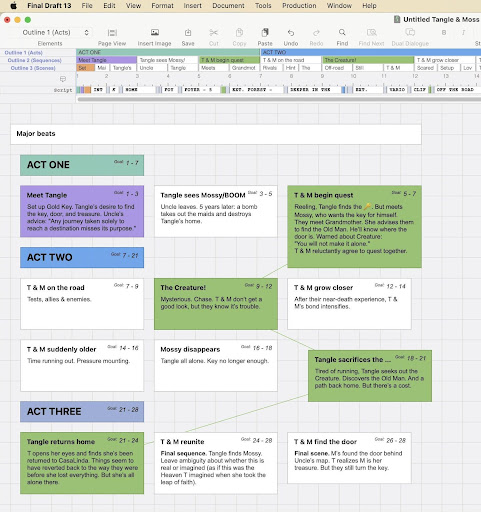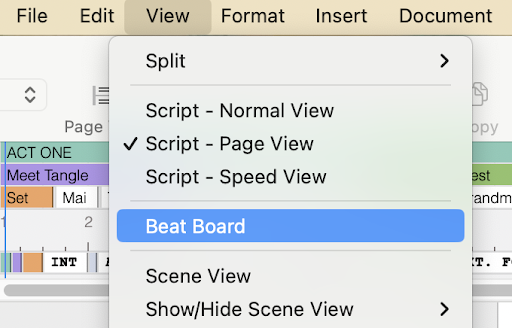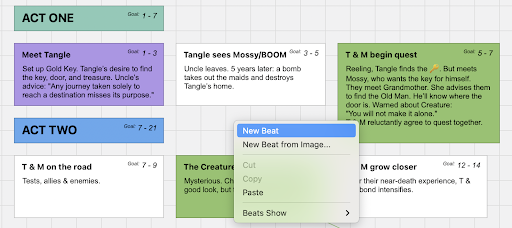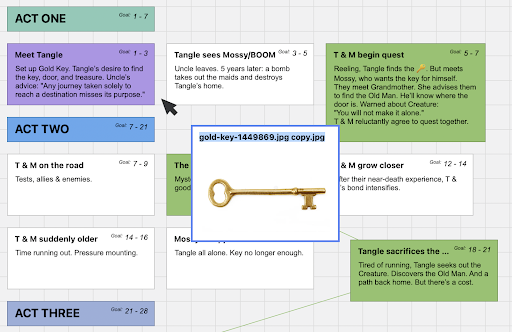Every compelling screenplay begins long before the first line of dialogue is written. At the heart of great storytelling lies a foundation built on clear structure and creative exploration. Loglines, story beats, and brainstorming sessions are essential tools in a screenwriter’s arsenal—each serving a distinct role in shaping a cohesive, emotionally resonant narrative. In this article, we’ll explore how these core elements help writers clarify their vision, map out plot progression, and ignite fresh ideas, ultimately turning a concept into a compelling cinematic experience.
Writing Loglines
A logline is the overall concept for your screenplay described in one short and concise sentence (aka “your elevator or thumbnail pitch”). Your logline should describe the main character(s) and the primary situation they’re entangled in. Perhaps also the location or time period if it’s a distinguishing element of your story. However, the main thing to focus on when writing your log-line is the main character, their primary goal or conflict, and the obstacles they encounter when trying to obtain their goal or overcome their conflict.
Although not every story is going to be as easily broken down as this, the more marketable concepts will be. Regardless, before attempting to write your screenplay, you should try to write your concept — regardless of its simplicity or complexity — as a logline. This will help you to focus on what’s essential to your concept, and to more effectively construct your story around it.
Here are some examples of loglines:
“When a killer shark unleashes chaos in a beach community, it’s up to a local sheriff, a marine biologist, and an old seafarer to hunt the beast down.”
“A group of scientists invited to an island theme park with cloned dinosaurs must fight to survive when the prehistoric creatures break free and wreak havoc.”
“A family must navigate their life in silence after mysterious creatures that hunt by sound threaten their survival.”
When you read the logline, what ideas does it generate for you? What scenes can you see, and what trajectory will your story take?
These ideas are what we call story beats.
Story Beats
A story beat is a smaller event that happens within a larger sequence or narrative. Think of beats as the molecules of a screenplay or television script. A beat can be a scene or character idea, but it can also be a theme you want to explore (e.g. a character attempting to reclaim their glory days).
Perhaps you’ve seen images of a TV writer’s room and noticed a whiteboard with a bunch of handwritten sticky notes attached to it. Or maybe you’ve watched a behind-the-scenes featurette of a movie and noticed a corkboard at a production company’s office, and it was similarly covered with sticky notes or index cards. These boards are referred to as a “beat board” in the film and television industry. Simply put, it’s a map of your story beats.
These Beat Boards are a crucial tool in the development of a screenplay, TV pilot or story. Outlining your story beforehand in a Beat Board can make the writing process easier, as it gives you an opportunity to explore your story and what will happen in it before you start writing the actual script.
Sticky notes and index cards are popular because you can move the beats around the board as you make changes to the story. Maybe after some rethinking, you decide that a certain beat works better in a different section of your story. No problem – you can just move the beat to the desired spot on the board.
Even if you’re not a staff writer or working with a production company, you can create your own beat board when developing a story, using sticky notes or index cards and sticking them to a board or even to a wall in your home. Outlining before going to script helps many writers feel more secure about the writing process, and again, it’s a good way to make sure your script is properly paced.
While you can always use your wall or a corkboard, Final Draft has a more elegant solution that keeps everything in one place.
The Final Draft Beat Board™
Final Draft has various outlining tools that can help you construct and piece together your story at the earliest stages. One of the most important tools available is the Beat Board. The Beat Board in Final Draft is used to plan scenes, sequences, plot, act structure, or character goals for a screenplay, TV pilot or any media content, just like the corkboard or writer’s room wall.


Building Your Story, Beat By Beat
The more of your story you have mapped out, the easier it’ll be to write your screenplay. The Beat Board is the perfect place to begin building your story, beat by beat.
To open the Beat Board, go to View > Beat Board (or via the toolbar on Mac or the Home or View ribbon on Windows):


Hitting Command + Return on a Mac or Control + Enter on Windows creates a beat, or simply double-clicking anywhere on the board will create a beat as well:


Once a beat is created, you can add any information you’d like in the beat: ideas for a scene, story point, plot twists, a character backstory, an important reveal or any element you think the story needs. Maybe you have a photo of a certain location, or an illustration of a character you’d like to have on the board. You can easily drag an image into the Beat Board to create a visual beat too:


Brainstorming
Perhaps the biggest benefit of the Beat Board is how it can be used as a brainstorming tool. Seeing your ideas written out can help you visualize them and see how they work with your other ideas. Also comparing and rearranging your ideas will get your mind working and put you in a creative headspace.
The Beat Board in Final Draft is also highly customizable, so you can arrange and modify beats to how your mind works. Right-click a beat to color code it or drag one beat onto another to form a line between them. The goal is not to limit your thinking, but to accelerate it. Every beat is an idea and every idea can lead to another idea.
How to Turn a Logline Into a Story
Write your logline and write 20 beats inspired by it: scene ideas, character ideas, themes, images, etc. After you create the 20 beats, organize them and have fun doing it. Move them around like different puzzle pieces. When certain beats click into place and a story starts to take shape, it’s an exhilarating feeling.
Once you start to see a clear story structure emerging, it’s time to create your outline in our next lesson.
